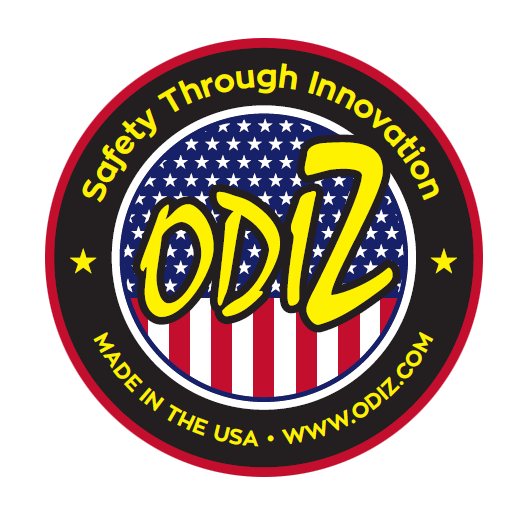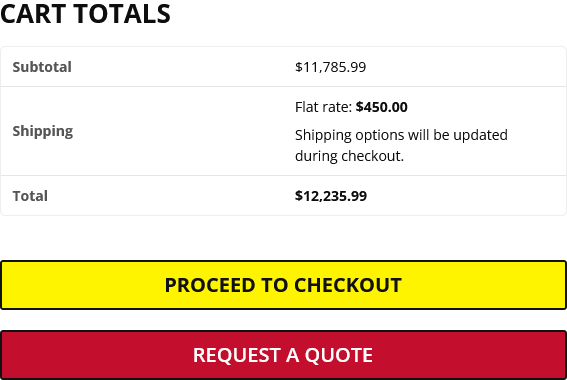OSHA Lifting Sling Inspections
Professional lifting sling inspections and rigging equipment safety services. Ensure your slings meet 29 CFR 1910.184 & 1926.251 standards with our digital inspection app.
Lifting slings are essential for material handling and crane operations but are a frequent source of serious OSHA violations. A failed sling can cause catastrophic accidents and fatalities.
To request more information about this product or service, please complete the form below. You can also chat live with one of our specialists via the widget in the bottom-right corner of your screen or call us at (574) 318-4333.
OSHA Lifting Sling Regulations You Need to Know
Lifting slings are essential for material handling, rigging, and crane operations but require regular inspection and immediate removal if defective. OSHA standards under 29 CFR 1910.184 and 29 CFR 1926.251 mandate proper sling safety inspections and documentation.
29 CFR 1910.184
General Industry Slings
29 CFR 1926.251
Construction Rigging
ASME B30.9
Sling Inspection Criteria
Before Each Shift
Required Inspection Frequency
Common OSHA Sling Violations
The most frequent citations and hazards with lifting slings that lead to serious OSHA violations and catastrophic accidents.
🏷️
Missing Identification Tags
Missing or unreadable manufacturer identification tags required for proper sling identification and capacity verification.
🔗
Wire Rope Damage
Wire rope slings with kinks, birdcaging, or broken wires that compromise structural integrity and load capacity.
⛓️
Chain Sling Wear
Alloy steel chain slings stretched or worn beyond OSHA limits, creating dangerous load failure conditions.
🧵
Synthetic Sling Damage
Synthetic slings with burns, cuts, UV degradation, or broken stitching that reduce load-bearing capacity.
🪝
Defective End Fittings
End fittings (hooks, links, shackles) with cracks or missing safety latches that create drop hazards.
🌡️
Environmental Damage
Slings exposed to heat, chemicals, or overload beyond manufacturer limits causing material degradation.
🔧
Unauthorized Repairs
Unauthorized field repairs like welding, knots, or wire wraps that compromise sling integrity.
📋
Inspection Failures
Failure to inspect slings before each use or keep proper inspection records as required by OSHA.
Why Sling Inspections Matter
Sling failures can result in catastrophic consequences that affect workers, operations, and regulatory compliance. Regular lifting sling inspections are critical for preventing these serious incidents.
- Fatal struck-by and crushed-by accidents from dropped loads
- OSHA citations under §1910.184 or §1926.251
- Costly damage to equipment and materials
- Shutdowns, liability claims, and insurance penalties
Routine inspections ensure slings are structurally sound, properly tagged, and rated for the intended lift configuration.
SAFETY FIRST
OSHA & ASME Standards
Sling requirements are covered under comprehensive OSHA and ASME standards that set limits for wear, damage, load capacity, and proper end fittings.
29 CFR 1910.184
Slings (General Industry)
Comprehensive requirements for wire rope, chain, synthetic, and mesh slings in general industry applications.
29 CFR 1926.251
Rigging Equipment for Material Handling
Construction industry requirements for rigging equipment including slings, hooks, and lifting devices.
ASME B30.9
Slings Inspection Criteria
Detailed inspection criteria and removal guidelines for all sling types with specific damage thresholds.
OSHA Fact Sheet
Sling Safety Guidelines
Official OSHA guidance on sling inspection, safe use, and removal from service procedures.
The Smarter Way to Stay Compliant
Our OSHA Sling Inspection App simplifies sling compliance with comprehensive tracking and OSHA/ASME removal criteria guidance.
📋
Complete Sling Documentation
Records sling type, grade, configuration, length, diameter, and capacity for comprehensive inventory management.
🏭
Manufacturer Tracking
Tracks manufacturer information and inspection history to maintain complete sling lifecycle documentation.
📖
OSHA & ASME Guidance
Guides inspectors through OSHA and ASME removal-from-service criteria for all sling types.
🚨
Damage Detection
Flags damaged or overloaded slings for immediate removal based on standardized inspection criteria.
📊
Digital Reporting
Generates digital reports for OSHA audits and insurance reviews with complete inspection history.
🎓
Training Compliance
Ensures employees are trained and inspection frequency requirements are met according to OSHA standards.
Prevent catastrophic failures and maintain complete compliance with the most closely inspected rigging components on any jobsite.
Stay Ahead of OSHA Citations
Slings are some of the most closely inspected rigging components on any jobsite. With our digital inspection solution, you can ensure complete compliance and safety.
Prove Compliance
Meet 1910.184, 1926.251, and ASME B30.9
Prevent Failures
Stop catastrophic failures and accidents
Complete Documentation
Maintain inspection documentation
Improve Safety Culture
Reduce liability exposure
Sling Compliance FAQs
Common questions about OSHA lifting sling inspections, rigging equipment safety, and compliance requirements.
How often must slings be inspected?
OSHA requires inspection before each shift and during use according to §1910.184(d). Defective slings must be removed from service immediately. Regular documented inspections are essential for compliance.
Do different sling types have different removal criteria?
Yes. Wire rope, chain, web, round, and mesh slings each have unique removal criteria under §1910.184 and ASME B30.9. Each sling type has specific damage thresholds and inspection requirements.
What about sling identification tags?
If the identification tag is missing or illegible, the sling must be removed from service immediately according to §1910.184(c)(1). Tags are essential for capacity verification and proper use.
Are employees required to be trained on sling use?
Yes. Workers using slings must be trained in safe use, inspection, and handling practices according to §1910.184(a). Training must cover proper rigging techniques and hazard recognition.
What are the key inspection points for wire rope slings?
Key inspection points include broken wires, kinks, birdcaging, corrosion, wear, and end fitting condition. ASME B30.9 provides specific criteria for removal from service based on wire breakage patterns.
Can damaged slings be repaired in the field?
No. Field repairs like welding, knots, or wire wraps are prohibited. Damaged slings must be removed from service and either professionally repaired by qualified personnel or destroyed.


